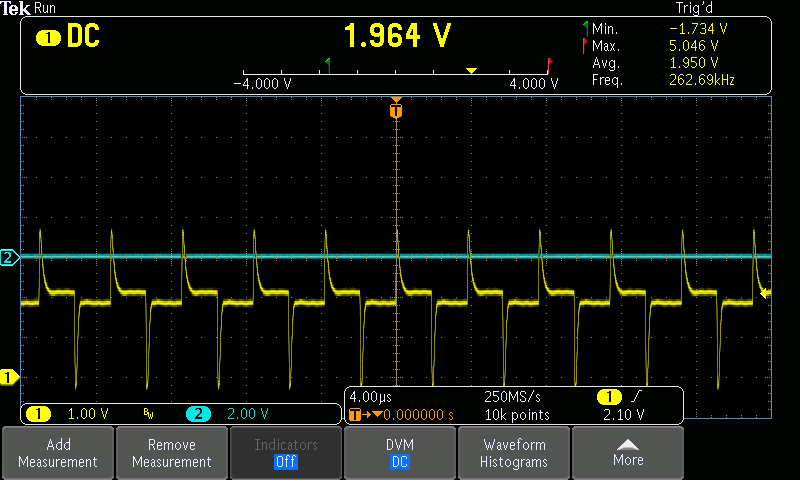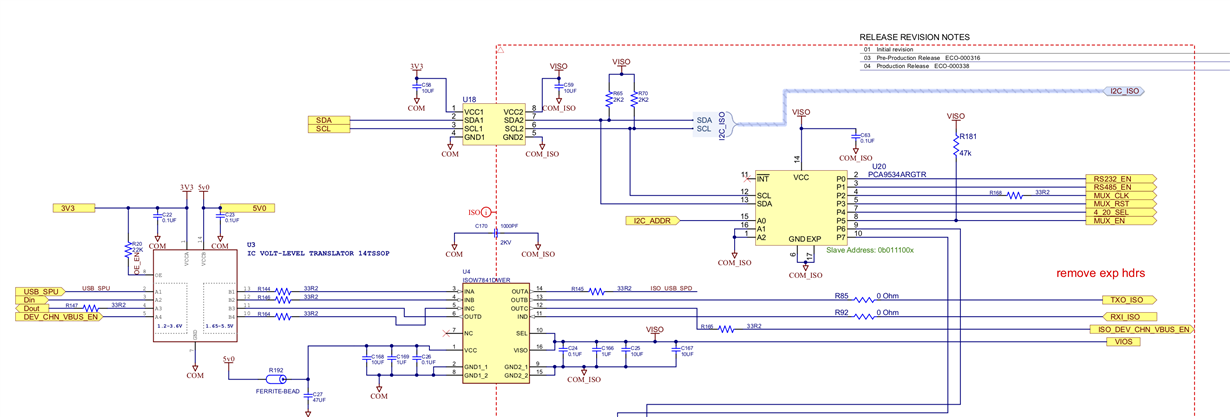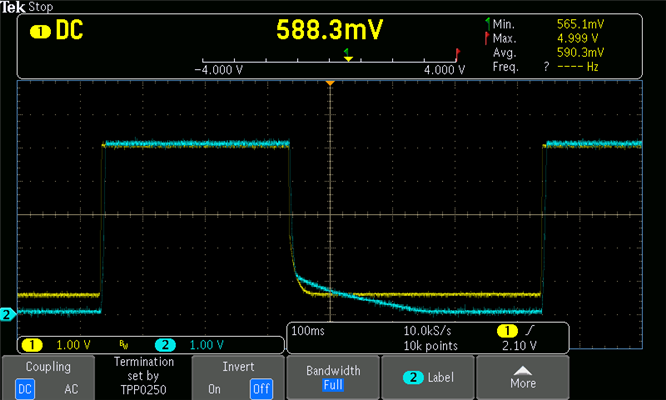Other Parts Discussed in Thread: ISOW7841, TXB0104, ISO7841,
Hello,
We have units in the field that are failing. In circuit I measured Viso as 1.965V and the chip is very hot. So first thought is that the circuit is shorting the output of the ISOW7841. However, I lifted the VISO and VSEL pins on the ISOW7841 and powered the rest of the isolated circuit from a lab power supply and measured 18mA at 5V. So I don't think it's the isolated circuitry.
Next I measured the output of the ISOW7841, open circuit and with a load consisting of 1000uF & 100 ohms (50mA). Scope traces are attached.
It's obvious that the ISOW7841 is NFG, but what could cause this issue? I can send your team the IC if needed for further analysis. I ordered replacement ICs and will swap out the part once the replacements arrive.
Input voltage is 5V and VSEL is connected directly to VISO for 5V output.
On the input side of the ISOW7841 there is 47uF || 10uF || 1uF || 0.1uF. On the VISO output side there is 10uF || 10uF || 1uF || 0.1uF.
The 5V rail that is powering this chip (and the attached voltage translator) gets powered up about once every 15 minutes, does its thing, and then gets turned off. I measured the slew rate of the input power as 1mS/V and it is smooth, well within the 10mSec parameter on the datasheet to get to full 5V. The voltage translator is a TI TXB0104, bidirectional. One thought is whether the translator is to blame, but I couldn't figure out how that could cause VISO to fail.
Thank you,
Derek









